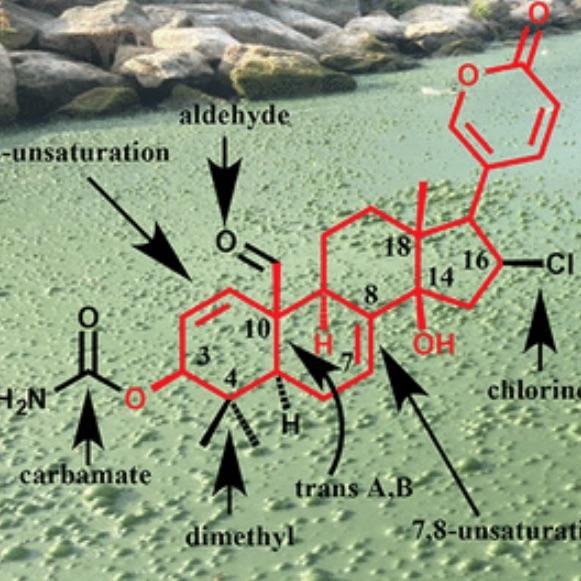Algal blooms are gross.
They're also bad for the environment. As the blooms die and decay, oxygen is consumed, and then fish die. Worse, some algal blooms produce toxins, such as neurotoxins, that are harmful to humans and other animals. Now, we can add another danger to the list: Heart toxins.
Two lakes in Ohio, Buckeye Lake and Grand Lake St. Marys, are frequently subjected to noxious algal blooms. A team of researchers takes advantage of these phenomena, poking around in the hope of finding new anti-cancer drugs. This time, they stumbled across a potent steroidal cardiotoxin, instead.
The authors isolated biomass samples from algal blooms in both lakes. After performing a chemical extraction, they tested for the ability of the extracted molecules to kill cancer cells in the laboratory. They found that one of the isolated molecules, which they called "cyanobufalin A," not only killed cancer cells but normal cells, as well. Intriguingly, it was structurally related to a class of molecules that can have a nasty effect on heart cells.
So, the team performed another toxicity analysis using human induced pluripotent stem cell (hIPSC)-derived cardiomyocytes, a cell line that is commonly used in preclinical drug development to determine if a potential therapeutic drug may cause heart problems. Indeed, they found that cyanobufalin A greatly interfered with heart cell contraction, probably by affecting the ability of these cells to properly regulate sodium and potassium ion concentrations. That means cyanobufalin A likely would have a negative effect on a beating heart in a living human. Obviously, such a finding disqualifies cyanobufalin A as an anti-cancer therapeutic.
But it does raise further concerns about algal blooms. The authors aren't quite sure which microbe is responsible for making it, but they suspect Planktothrix, a type of cyanobacterium. When your favorite swimming hole turns green, be sure to stay out of the water.
Source: Haiyin He et al. "Cyanobufalins: Cardioactive Toxins from Cyanobacterial Blooms." J. Nat. Prod., Article ASAP. Published: October 28, 2018. DOI: 10.1021/acs.jnatprod.8b00736




